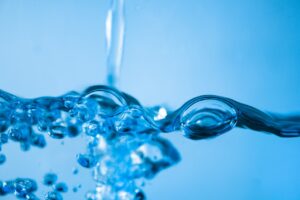Reverse Osmosis Water Softener
In facilities and homes all around the country, millions of Americans use billions of gallons of water daily. Almost all industrial and home operations require the use of water. It is one of the most common solvents manufacturers use when creating material. This is why the world is dependent on water. Having good quality water is therefore vital.
Quality water is free of contaminants and harmful viruses and bacteria. This is why you have to depend on water treatment systems to work optimally. These systems use reverse osmosis methods and water softener devices, along with others to deliver high-quality water.
While the water supply is already treated to a certain extent, many experts believe that it is not enough. Just because there is a presence of a filtration system, it does not guarantee water with optimum quality.
Issues with Salt-Based Water Softeners
Salt-based water softeners have been around for many years. They gained popularity because they were the only option for household and industrial use. Today, with advances in technology and research, experts notice that salt-based systems are harmful on many levels.
They use an ion-exchange mechanism to soften up the water. In this, artificially softened water is where the hard water particles significantly reduce in concentration. They are reduced because they get replaced with salts.
As they get ionized, millions of small resin beads, saturated with salt and a negative charge, mix with the water entering the tank. As the hard water moves through the beads, the molecules of calcium and magnesium exchange with the salt.
Technically, these types of water softeners neither filter nor purify the water. Instead, they only reduce the hardness of the water. They do help in filtering out or removing the contaminants inside the water. They leave behind salts in the water that is also impure, if not harmful in the same way.
the water that is also impure, if not harmful in the same way.
For this reason and others, it is important to incorporate a reverse osmosis system with the softeners. Since the reverse osmosis system helps filter out salt molecules and other contaminants, implementing both methods will lead to water that is soft and free from any impurities and salts.
Reverse Osmosis
Reverse Osmosis membranes comprise of microporous layers that have permeations of different microns. These barrier layers help remove nutrients, chemicals, and bacteria from the water. Water passes through the membrane surface and into the permeate channel.
It flows in a spiral direction and collects in the core tube. The water that collects in the core tube is the final water product or permeates. There are seven spiral wound elements loaded in one pressure vessel. Once the net adapter connects to the last element and the pressure vessel seals, feed water is then introduced.
Feedwater pumps at high pressure in the vessels, and as it makes it way through the vessels, small molecules of water pass through the membrane. While on the other hand, larger particles like viruses, bacteria, and salts do not pass.
To Conclude
Both reverse osmosis and water softeners are great techniques to condition water for application. However, one capitalizes on the disadvantages for others.





